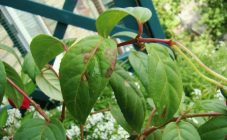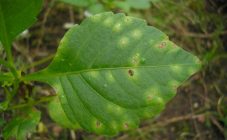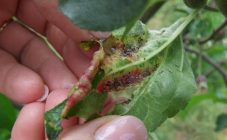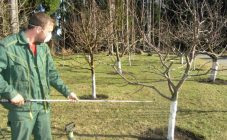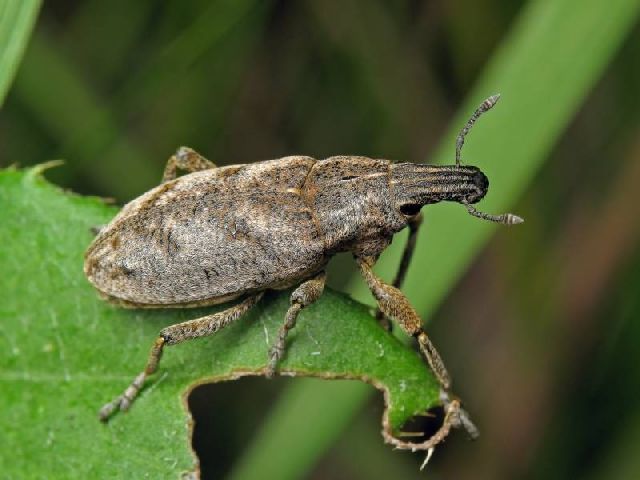Content:
The popularity of thuja is associated with the beauty of evergreen emerald needles and ease of care. It looks great in summer weather among flowering shrubs and diversifies the snow-white purity of the winter landscape. Any diseases of thuja affect the appearance and can even lead to the death of an ornamental plant. What causes yellowing, why does thuja turn black, how to treat? If the thuja dries up, how to save it needs to be solved as soon as possible, otherwise you can lose the tree.
Any lover of flora can get rid of the disease and choose a treatment that is correct and effective. The material below offers tips and methods for dealing with diseases and pests.
Thuja diseases and treatment methods
Thuja is resistant to disease, but improper care and high humidity can lead to disease.
The following are the symptoms and external manifestations of various infections of the species of this culture, including the description of the diseases of the popular thuja smaragd and how to cure them from ailments.
- Phytophthora is the most serious fungal disease. Poor soil drainage and high groundwater levels can cause disease. The fungus, having settled on the roots, destroys the top layer, it becomes brittle, a rotten smell appears, and over time spreads throughout the plant. The trunk at the surface of the ground becomes loose and soft to the touch. The bark and needles take on a gray tint. The color of the trunk under the bark changes, it turns brown. The plant withers. If you do not take measures to save, thuja may die.
- Brown shoots are a fungal infection. The signs appear in the spring: the yellowing of the scales begins, which then passes on to the entire shoot, and its dying off occurs.
- Rust and shute thuja are fungal diseases that are often present on young thuja. The needles darken, then fall off. Infection usually begins in the spring, but continues throughout the year. The fungus that causes these diseases is always present in places where conifers grow, so the appearance of the disease cannot be explained by a specific cause.
- Brown shute, or "snow mold" appears on the needles after the snow melts. On the brown dead needles, a gray-black coating in the form of a cobweb is visible. Then dots appear - the bodies of the mushroom. The needles do not fall off for a long time, thin branches die off.
- The tinder fungus, with its spores, penetrates the thuja through mechanical damage or dry knots. In these places, growths appear - the body of the fungus. The tree turns yellow and dries up.
- Fusarium of the roots manifests itself as yellowing, reddish color of the needles and drying out of the tree. Crohn's becomes rare. This is a fungal disease that affects the root system and blood vessels, the supply of food to the aerial part stops. Shoots begin to dry, then the whole plant. The disease more often affects weak and young specimens with insufficient nutrition. Treatment is mainly prevention.
The table shows the methods, preventive measures and the necessary drugs for the treatment of thuja diseases:
| Disease | Methods and preparations | Prevention | |||
|---|---|---|---|---|---|
| Phytophthora | Not subject to treatment; thuja is dug up and destroyed; since fungal spores remain in the soil for a long time, it must be replaced or disinfected. | Frequent watering with fungicides. | |||
| Brown shoots | Affected shoots are cut to avoid spreading the disease. | Conducting constant feeding; adding limestone to the roots; spraying with foundation (2% solution). | |||
| Rust and shute | Pruning affected branches followed by burning; Treatment of the near-stem circles of infected plants with foundation, and the plants themselves with a HOM solution (40 g per 10 l of water). | From the beginning of spring and in May, the treatment of all conifers on the site with a HOM solution (40 g per 10 l of water). Effective method: treatment with Bordeaux liquid; Spraying with Topsin-M once in spring (15 g per 10 l of water per 1 tree). | |||
| Tinder fungus | Mushrooms affected and yellowed sections of the tree are cut; all wounds are cleaned and treated special putty; the whole plant is sprayed with Bordeaux liquid. | spraying with Bordeaux liquid is carried out in the spring and autumn. | |||
| Brown shute | Prune and burn infected branches. | Peat crumb scattering on the snow to speed up the melting of snow; spraying in late autumn and after descent snow with Kurzat (0.7% solution) or copper chloride (0.5% solution); every 10 days spraying with foundation (0.2% solution). | |||
| Fusarium root | Destroy infected plants disinfect the soil. | Top dressing with fertilizers containing iron and copper; The entire crown and roots are watered with contact and biological fungicides: Abiga Peak; kartotsid, HOM or spray the crowns with foundation (0.2% solution); processing with zircon. cut dry and damaged shoots in spring, shorten all branches by 1/3 of the length in summer. |
If thuja turns black, what to do?
First of all, determine the reason, there are only two of them:
- faeces of animals;
- fungus.
But until the reason is clarified, it is necessary to spray the plant with fungicides 1-2 times against fungal diseases as a preventive measure.
Blackening of the needles occurs when exposed to urine, these areas will be located at a certain height and have a random distribution, like splashes.
In this case, you can:
- put fences to protect the plant from animal access;
- wash with water (if minor impact);
- use repelling aerosols;
- sprinkle with ground pepper;
- spray with growth stimulants (zircon, epin) 2-3 times with an interval of 1-2 weeks.
If this is a fungal infection, on closer examination, you can notice fungal spores in the form of black dots or dashes. And start medical procedures to eliminate the fungal disease.
Thuja has dried up, how to revive, is it possible?
First you need to figure out what caused this:
- poor care;
- color change in winter;
- spring burn;
- an excess of fertilizers or drugs;
- excess or lack of moisture;
- the presence of pests or diseases.
After determining the cause, they begin to eliminate the specific factor.
To avoid the appearance of diseases, it is necessary to conduct an audit in the spring: remove the affected and dry branches. Then carry out preventive treatments against pests and diseases.
Bordeaux liquid has proven itself perfectly - a very effective and proven remedy for years.
Dangerous pests and control
Thuja pests cause great damage and can lead to death if they do not begin to destroy insects in time.
- Thuja aphid causes great harm: when it appears, the needles turn yellow and fall off, the tree dries up, since the insect settles on the needles and feeds on plant juices.
- Thuvaya speckled moth is a small butterfly (4 mm). Appears in early summer. The tops of the shoots, when damaged, become brown and die off. Holes that gnawed through its larvae are visible through the lumen.
- The false shield, the adult insects of which are only 3 mm in size, have a yellow-brown color. Thujas and their larvae harm, hibernating under the bark of young shoots. The bark is covered with yellow ulcers, they gradually increase and grow.
- Wireworm (click beetle) - black or brown up to 13 mm long. Damages the roots, which weakens the growth and development of thuja, needles and even branches begin to fall off. Beetles gnaw at first thin roots, then move to thick roots. The larvae usually live in low areas with acidic soil where water stagnates.
- The spider mite loves dry places, its presence is indicated by the cobweb on the thuja, which entangles the entire plant. This leads to yellowing and shedding of the needles. The danger of this pest is in rapid reproduction.
The table shows the methods and methods of struggle and the drugs used:
| Pest | Methods and preparations | Traditional methods |
|---|---|---|
| Thuvaya aphid | Processing with Karbofos | |
| Thuvaya speckled moth | Treatment with drugs based on pyrethroids; processing several times at the end of June with an interval of 7 days. | |
| False shield | Processing before bud break with Karbofos, Aktellik, Antio with the massive appearance of insects. | 1st method: wrapping the trunk with straw or burlap while processing a solution of laundry soap on denatured alcohol (15 g soap, 10 ml denatured alcohol, 1 l warm water); 2nd method: applying special glue from the tracks to the surface of the barrel; small numbers of pests can be removed with a brush or knife. |
| Wireworm (click beetle) | Drainage and soil deoxidation; Autumn digging; In case of a mass invasion: the introduction of funds into the soil, containing diazonin. | |
| Spider mite | When cobwebs appear: spraying with infusion garlic or dandelion; Spraying with plain water - the mite does not like moisture. |
Thuy bark beetle leaves holes on the bark. When buying, you should carefully examine the seedlings so as not to bring the pest to the site. To combat it, insecticide injections are used at the sites of pest infestation, which is within the power of experienced gardeners. The following pests are also very harmful, the fight against which consists in treating with insecticides.
- Weevils eat the bark of young shoots, the larvae destroy the root system. The tips of the branches take on a brown tint. The insect loves acidic moist soil, therefore liming it is necessary to eliminate the pest.
- The leafworm arranges its cocoons between the needles, entangling them with cobwebs. It feeds for a month, causing great harm to the plant, which dries up and dies. Spraying with insecticides is carried out twice: in May and in the first half of June. With a massive invasion, repeat in July.
Beauty thuja (western) smaragd (translated as "emerald") most often used as an ornamental plant. Decorates alpine slides, its columnar crown serves as a hedge, perfectly coexists with shrubs and flowers. It's a shame if suddenly the thuja has turned black or crumbled, its attractiveness fades. Care errors, improperly chosen planting site, insufficient distance between plants are common causes of diseases and pests. The tips above will help you get out of trouble, grow and maintain a great decorative tree.




